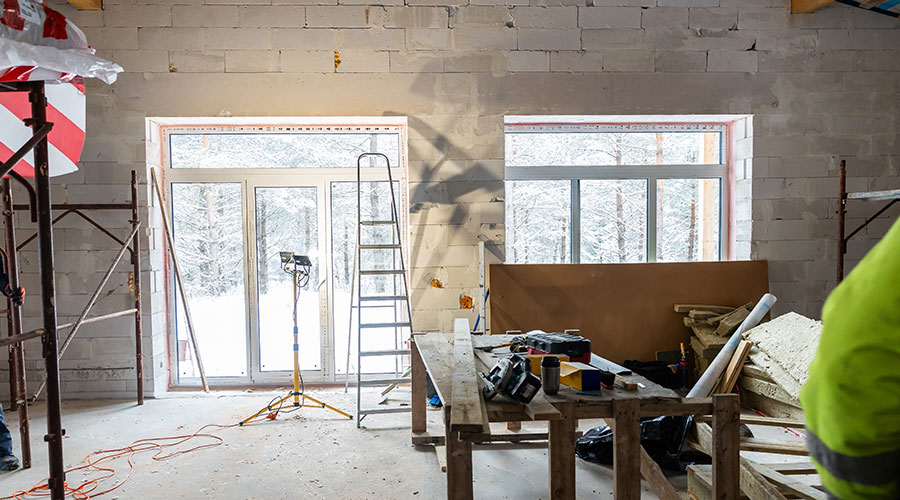EMS / BAS
With upgrades, devil is in the details.
View related products
It’s the first day of the new fiscal year. The facility executive has been given the go-ahead to upgrade existing campus energy management control systems — many of them legacy systems that have become fragmented and obsolete — serving buildings on a large campus. Yet, before a dollar is spent on the upgrade, it is essential to develop a master plan describing energy management goals and ways to meet them.
The first step is to initiate preliminary master planning sessions to identify attainable facility operating goals. This in-house process lays the groundwork for discussions with control system designers and engineers who will develop the master plan.
In-house discussions centering on sharing campus system technologies — for example, identifying a campuswide IT communication infrastructure for interoperability and existing HVAC or plant equipment with the capability of direct communication integration — will help define the minimum criteria for all energy management control system projects.
Other operating criteria might include reducing energy consumption, possible reuse of existing pneumatic or conduit infrastructures, maintaining universal spare parts, developing a training program for operating personnel, and requiring commissioning of new systems.
Facility executives also should begin gathering the information needed by designers, including a site plan, AutoCAD architectural documents for each building, HVAC contents of each building, and system documentation. This information will enable the design team to understand the existing mechanical and electrical systems. This is essential to ensure optimal installation and proper operation of the new system.
Building the Right Team
The next step is forming a dedicated project team comprising on-site facility personnel and control system design professionals. On-site personnel will have ownership for the implementation and operation of the system. These site specialists must have technical knowledge and experience in operating the existing campus HVAC and plant equipment. They ultimately will be responsible for maintaining and operating the new system, including upgrades.
The engineering services request for proposal (RFP) should require significant experience with master planning or design of systems of similar size and technical complexity. Firms should provide a list of comparable completed projects that have energy management systems with control features desired for this project.
The selected firm should understand the management process required to organize multiple building-related projects into discreet phased efforts, with deadlines and milestones identified in advance, keeping in mind spending constraints.
The firm should have first-hand knowledge of control system technologies, legacy systems, pneumatic controls and communication infrastructure issues, such as open communication standards. Its understanding of codes, regulations, laws and guidelines should be reviewed.
Master Plan Strategies
Site specialists and design professionals working together will develop the master plan based on the as-built data and goals for the new system. The overarching goal is to achieve greater and more precise control of multiple building systems in a unified approach. The team will identify global system software and control strategies during master planning sessions.
The process of developing the master plan raises many issues:
- Existing Equipment — All legacy control system equipment serving each building must be reviewed. Outdated equipment that uses obsolete programming languages and lacks sufficient memory or expansion capabilities must be replaced. Replacement will reduce future troubleshooting and software revision time to a manageable level. The impact of replacing legacy systems during each project phase must be studied.
- Quantity of vendors — This is a topic of much debate. Can a single control vendor provide support for the entire project? If a single vendor is selected, that vendor may lock the facility executive in to proprietary equipment. If two vendors capable of sharing data via an open communication protocol are selected, the facility executive gains competitive bidding and price benefits. However, no more than two vendors should be considered.
- Project phasing on the large campus — The size and complexity of a project of this nature does not fit a short-term project structure. Budgets will require this type of project to be done over a period of years. Planning a phased approach requires defining the overall project duration and scheduling buildings and campus areas for conversion. Top priority should go to buildings where environmental control is critical in reducing energy consumption. Next, look to convert buildings where existing control equipment is so old and unreliable it brings the risk of catastrophic failure.
- Establishing hardware and software standards — Technical standards to be followed by on-site personnel and external vendors create uniformity and step-by-step guidelines to ensure that overall system performance levels are maintained throughout all project phases. They also provide a template that promotes consistent operator responses to environmental control incidents. The master plan should include written standards for master control specifications, standard sequence of operations, point naming convention, graphics, installation, equipment, network communication, programming, testing and commissioning, operations and maintenance, documentation and training.
- Interoperability — Communication standards for control system capabilities for data collection, archiving, networking and remote annunciation also must be established. Use of standard copper or fiber optic cabling that supports the PC industry standard of Ethernet TCP/IP (IEEE standard 802.3) should be considered. Consider current open control protocols, such as BACnet, LonWorks and Web-based control networks, that communicate over the Internet using standard Web browsers. Open protocols allow equipment from different vendors to interact; however, each vendor’s equipment will require separate means to program. Additional on-site personnel training will be required.
- Existing campus IT communication infrastructure — Using an existing campus IT communication infrastructure is another option to study. Restricting access to the control network equipment on an existing IT communication infrastructure will require firewalls and other communication security applications such as a virtual private network portal. On-site campus IT personnel should be consulted on this issue.
- HVAC equipment direct protocol integration — A modern control system can communicate bi-directional data to third-party manufacturers’ control panels. The system can receive, react to, and return information from multiple building components, including chillers, boilers, variable frequency drives, and power monitoring, fire alarm, access control and lighting systems. All data required by each application can be mapped into the energy management control system database, so it is transparent to the operator.
- Testing and commissioning — The master plan should establish written documentation for testing, commissioning and project close-out for each system. Commissioning should verify that the contractor and subcontractors followed proper installation practices, as well as verify points and calibration, system sequence of operation, and network/workstation performance. Guidelines to documentation should be presented upon completion of each commissioning step and final completion to ensure proper system operation. After each phased installation is completed, testing guidelines must be created for the contractor. Prior to acceptance testing of individual systems, consider using trend logs of input and output points via an automatic point history software feature for documentation purposes.
- Unified training program — The master plan should establish a unified training program for all operating personnel. Operating each building effectively requires that facility personnel are trained on all new equipment.
- Field end-device standards — Industry standard end-devices that provide 4-20 ma or 0-10 volt output signals with high measuring accuracy should be selected as part of a campuswide standard. End-devices must meet all required site measurement applications.
Software Applications
The planning team would also do well to consider certain specific applications software programs:
- Equipment scheduling: At a minimum, basic control functions for operating building HVAC and plant equipment will require the control system to operate equipment based on time of day.
- Supply air reset: Measuring and resetting supply air temperatures during part-load conditions can save energy in constant air volume systems.
- Static pressure reset: Measuring and resetting supply air static pressure during partial loads saves energy and is recommended for variable air volume systems.
- Economizer controls for mechanical air systems: Economizer controls save energy by allowing outdoor air to be used for cooling indoor spaces in lieu of mechanical cooling. When the enthalpy of the outside air is less than the enthalpy of the recirculating air, using cooler outside air is more energy efficient than mechanically cooling recirculating air. Economizer controls should be not used in hot and humid air.
- Alarming software: Monitoring critical equipment allows for early detection and system troubleshooting of abnormal conditions. Consider systems with remote alarming capabilities to PDAs or pagers.
- Start/stop optimization: Start/stop optimization control strategy determines when to start and set back HVAC equipment operation based on outdoor air and internal building temperatures.
A Living Document
The master plan will guide replacement of obsolete legacy systems with new state-of-the-art equipment providing precise control that increases occupant comfort and reduces occupant complaints. All too often, facility executives then breathe a sigh of relief and place the master plan on the bookshelf.
To serve its purpose, the master plan should be treated as a living document. It should serve as a desk guide for site specialists as they go about daily operations, a planning guide for all control system projects and a source of up-to-date documentation. Equally important, the master plan should be revised as the physical plant, facility operation goals and technology evolve. An up-to-date master plan serves as a valuable tool to help meet energy management goals.
Building a Paper Trail
Among the documents facility executives should gather to prepare for the design of an energy management control system are:
- Site plan indicating locations of all buildings.
- Plans for connecting tunnels between buildings or existing campus communication loop.
- General information for each building, including classification information (dormitory, office, laboratory, hospital, central plant, etc.), height, total area in square feet and mechanical equipment room locations.
- Existing documents indicating HVAC equipment located in each mechanical equipment room.
- Existing documentation on all control systems serving each building, including information on existing temperature control manufacturer and product installed, workstation locations, control panel locations, temperature control drawings and specifications, and pneumatic riser and compressed air system infrastructure.
- Normal and emergency power distribution locations for each building.
- AutoCAD architectural documents for each building.
- Contact names of all existing site temperature controls and energy management system maintenance providers.
- Sequence of operations for all systems being controlled.
- Software documentation.
- Equipment naming convention.
- Computer print out of all connected points to each existing standalone energy management control system.
|
Carlos Petty is an associate partner and group manager in the New York City office of Syska Hennessy Group, a consulting, engineering, technology and construction firm.
Related Topics:








